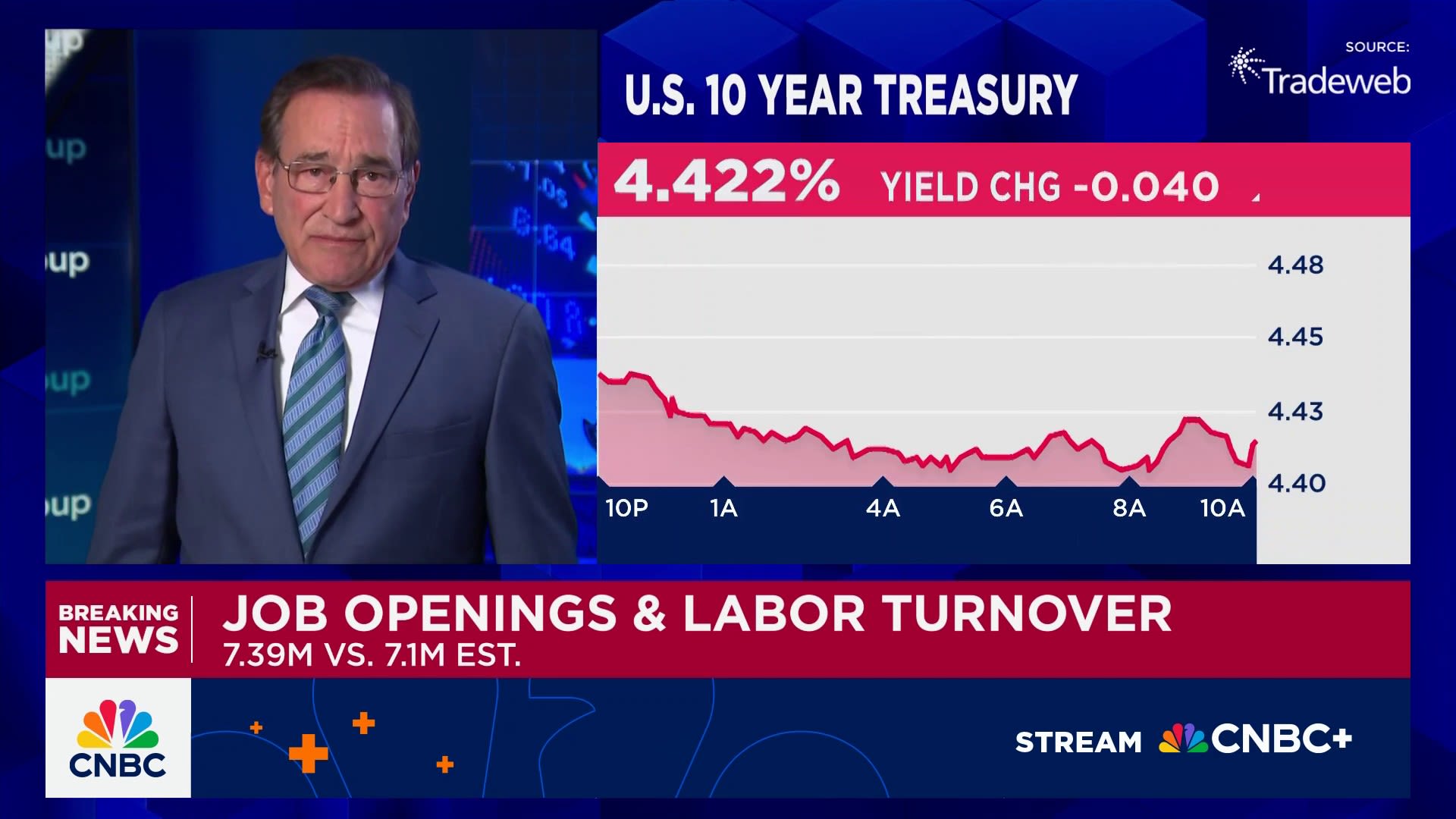
Employers increased job openings more than expected in April while hiring and layoffs also both rose, according to a report Tuesday that showed a relatively steady labor market.
The Bureau of Labor Statistics’ Job Openings and Labor Turnover Survey showed available jobs totaled nearly 7.4 million, an increase of 191,000 from March and higher than the 7.1 million consensus forecast by economists surveyed by FactSet. On an annual basis, the level was off 228,000, or about 3%.
The ratio of available jobs to unemployed workers was down to 1.03 to 1 for the month, close to the March level.
Hiring also increased for the month, rising by 169,000 to 5.6 million, while layoffs rose by 196,000 to 1.79 million.
Quits, an indicator of worker confidence in their ability to find another job, edged lower, falling by 150,000 to 3.2 million.
“The labor market is returning to more normal levels despite the uncertainty within the macro outlook,” wrote Jeffrey Roach, chief economist at LPL Research. “Underlying patterns in hirings and firings suggest the labor market is holding steady.”
The report comes just a few days ahead of the BLS nonfarm payrolls count for May.
With other signs, particularly sentiment data, showing that hiring is softening, economists expect job growth of 125,000, down from the 177,000 in April but still indicative of a solid labor market. The unemployment rate is expected to hold steady at 4.2%.
In other economic news Tuesday, the Commerce Department reported that new orders for manufactured goods fell more than expected in April. Orders fell 3.7% on the month, more than the 3.3% Dow Jones forecast and indicative of declining demand after swelling 3.4% in March as businesses sought to get ahead of President Donald Trump’s tariffs.
Shipment also fell, down 0.3%, while unfilled orders were relatively flat and inventories edged down 0.1%.
Federal Reserve officials are watching the various data points carefully for clues as to how various factors are affecting the broader economic picture. There is some fear that the tariffs will raise inflation and slow hiring, though that hasn’t showed up yet in the hard data. Sentiment surveys, by contrast, show heightened fears over both.
“For many sectors, I’m not hearing that the labor markets are changing in material ways,” Atlanta Fed President Raphael Bostic said in a scrum with reporters Tuesday. “At the macro level, I haven’t gotten sort of a strong overarching picture or impression that things are moving in a significant way, and we’ll just have to see if that stays or whether something changes.”
Traders largely expect the Fed to keep its benchmark borrowing rate steady in a range between 4.25%-4.5%, where it has been since December 2024. The market thinks the Fed won’t cut again until September, and Bostic said he only would favor one reduction this year.
Correction: Layoffs rose for the month by 196,000 to 1.79 million. A previous version mischaracterized the change. Raphael Bostic is president of the Atlanta Federal Reserve. A previous version misstated his name.







